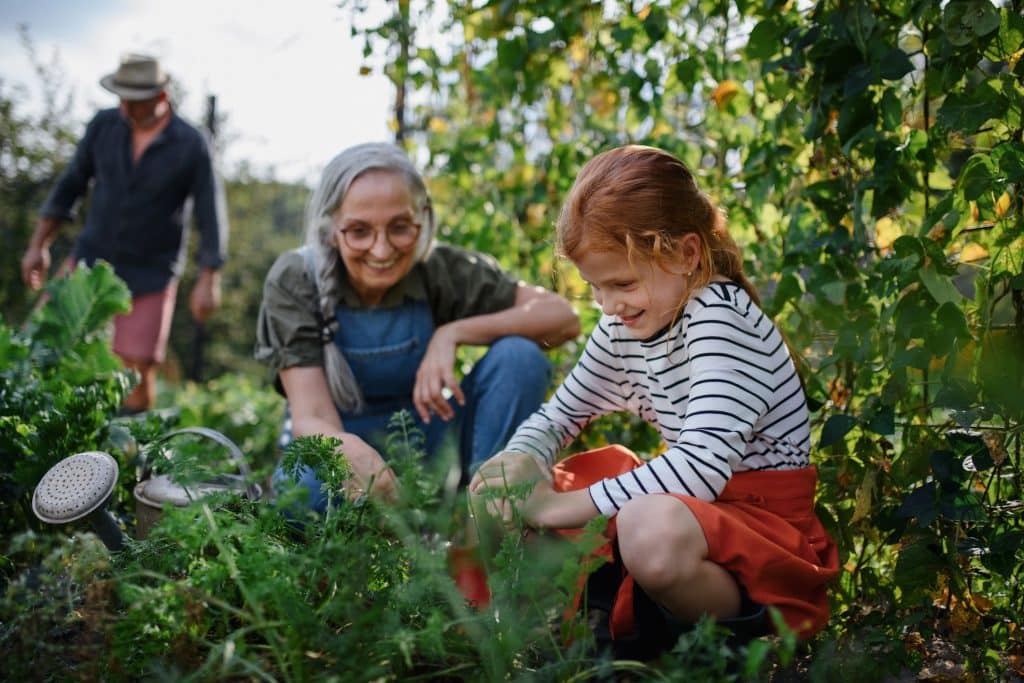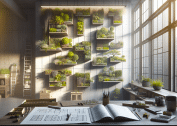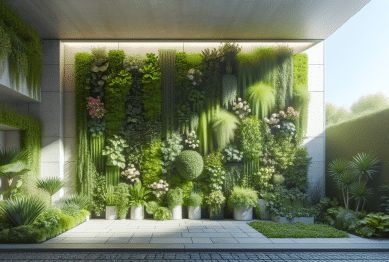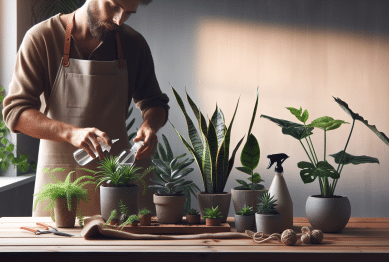In the ever-evolving world of sustainable gardening, there are new trends and practices shaping the way we garden for a greener future. As we dive deeper into environmentally friendly and resource-efficient gardening techniques, several hot topics are emerging in 2025. These practices focus not only on reducing environmental impact but also on enhancing garden health, biodiversity, and sustainability. Whether you’re a beginner or a seasoned gardener, this article will provide valuable insights into the latest trends and how you can adopt them in your garden.

1. Water-Efficient Gardening
One of the most pressing issues in gardening today is water conservation. With climate change affecting rainfall patterns and making water scarcity more common, gardeners are finding creative ways to conserve water while still keeping their plants healthy.
Smart Irrigation Systems: One of the standout innovations is the rise of smart irrigation systems. These systems adjust watering schedules based on weather forecasts, soil moisture levels, and plant requirements, ensuring that gardens receive the optimal amount of water without waste. Some advanced systems even allow for remote monitoring via smartphone apps, providing users with control over their garden’s irrigation no matter where they are.
Xeriscaping: Xeriscaping, or water-wise landscaping, continues to gain popularity, particularly in areas prone to drought. This technique involves using drought-resistant plants, such as succulents and native species, that thrive on minimal water. By choosing the right plants for your region, you can create a lush, beautiful garden that uses significantly less water.
2. Native Plants for Biodiversity
Using native plants in gardens is a key trend for 2025 as more gardeners recognize the importance of supporting local ecosystems. Native plants are naturally adapted to the local climate, soil, and pests, making them easier to care for and more resilient than non-native species.
Benefits of Native Plants: These plants require fewer resources, such as water and fertilizers, making them an eco-friendly choice. They also provide crucial habitats for local wildlife, such as pollinators, birds, and beneficial insects. By incorporating native plants into your garden, you contribute to the conservation of your local ecosystem and help maintain biodiversity.
3. Urban Farming and Vertical Gardens
As cities grow and space becomes more limited, urban farming and vertical gardening are becoming essential practices for sustainable living. Urban farming allows city dwellers to grow their own food while reducing their carbon footprint.
Vertical Gardens: Vertical gardening involves growing plants upwards rather than outwards, making it a perfect solution for small spaces like apartments and rooftops. From climbing vines to stacked planters, there are many creative ways to grow vegetables, herbs, and even fruits in urban environments. Vertical gardens can help reduce the urban heat island effect and improve air quality.
Community Gardens: In addition to individual urban farming, community gardens are growing in popularity. These shared spaces allow residents to collaborate on growing food, making sustainable gardening accessible to everyone. Community gardens help promote food security, reduce waste, and foster a sense of community.
4. Zero-Waste Gardening
Zero-waste gardening is an emerging trend that focuses on minimizing waste and reusing resources. This practice encourages gardeners to adopt sustainable practices that reduce their environmental footprint, from composting organic matter to repurposing materials.
Composting: One of the core principles of zero-waste gardening is composting. Composting allows gardeners to recycle food scraps, yard waste, and other organic materials into nutrient-rich soil. This reduces the need for chemical fertilizers and helps build healthy, fertile soil that can support a thriving garden.
Upcycling Materials: Gardeners are increasingly repurposing items like old containers, pallets, and even broken furniture to create unique planters and garden structures. This not only reduces waste but also adds a creative, personalized touch to the garden.
5. Sustainable Pest Control
With increasing awareness of the environmental impact of chemicals, sustainable pest control methods are becoming more popular. Organic solutions that rely on natural predators, companion planting, and organic pesticides are replacing harmful chemicals that can harm pollinators and other beneficial insects.
Integrated Pest Management (IPM): IPM is a holistic approach to pest control that combines biological, cultural, and mechanical practices to manage pests in an environmentally responsible way. By using techniques such as crop rotation, planting pest-repelling herbs, and encouraging natural predators like ladybugs, gardeners can control pests without resorting to harmful chemicals.
6. Regenerative Gardening
Regenerative gardening goes beyond sustainability by focusing on practices that restore and enhance the soil, improve water retention, and foster overall ecosystem health. This emerging trend includes techniques that actively improve the soil’s structure and nutrient content, ensuring long-term garden health.
Cover Cropping: Cover crops are plants grown not for harvest but to improve soil quality. These plants add organic matter, prevent erosion, and fix nitrogen in the soil, reducing the need for synthetic fertilizers. Cover cropping is a practice being increasingly adopted by gardeners who want to regenerate their soil.
Permaculture: Permaculture is a holistic gardening philosophy that focuses on designing gardens that mimic natural ecosystems. By using principles such as zoning, diversity, and resource conservation, permaculture gardeners create self-sustaining systems that require fewer external inputs and support a thriving ecosystem.
7. Greenhouse Gardening
Greenhouses are making a big comeback in 2025 as gardeners look to extend the growing season and protect plants from extreme weather. Modern greenhouses come in various sizes, from small, portable units to large, commercial setups, allowing gardeners of all scales to grow food year-round.
Energy-Efficient Greenhouses: As part of the sustainability movement, many new greenhouses are being built with energy-efficient materials and designs, including solar panels, rainwater collection systems, and passive heating methods. These energy-efficient greenhouses minimize the carbon footprint of food production and provide a reliable source of fresh, local produce.
8. Technology in Sustainable Gardening
The integration of technology into gardening practices is on the rise, helping gardeners monitor and optimize their gardens for maximum sustainability. From sensors that track soil moisture levels to apps that suggest eco-friendly gardening tips, technology is making it easier than ever to garden sustainably.
Smart Gardening Tools: Automated gardening tools such as self-watering systems, weather-monitoring devices, and smart composters are making sustainable gardening more efficient. These tools allow gardeners to track their garden’s performance, ensuring that they’re using the right amount of water and fertilizer at the right time.
Conclusion
As we head into 2025, sustainable gardening is becoming more advanced and accessible. With a focus on water conservation, native plants, urban farming, zero-waste practices, and technology, gardeners have a wide range of tools and techniques to create eco-friendly, productive spaces. By adopting these trends, gardeners can help build a greener future while enjoying the many benefits of growing their own food and fostering biodiversity.
References
- Greenhouse Gardening. (2025). Sustainable gardening trends in 2025. Green Thumb.
Available at: https://www.greenthumb.com (Accessed: 19 August 2025). - Xeriscaping and Water Conservation. (2025). Water-efficient gardening: Saving resources with xeriscaping. The Gardeners’ Journal. Available at: https://www.gardenersjournal.com
(Accessed: 19 August 2025). - Native Plants and Biodiversity. (2025). The importance of native plants in sustainable gardening. EcoGarden Guide. Available at: https://www.ecogardenguide.com (Accessed: 19 August 2025).









